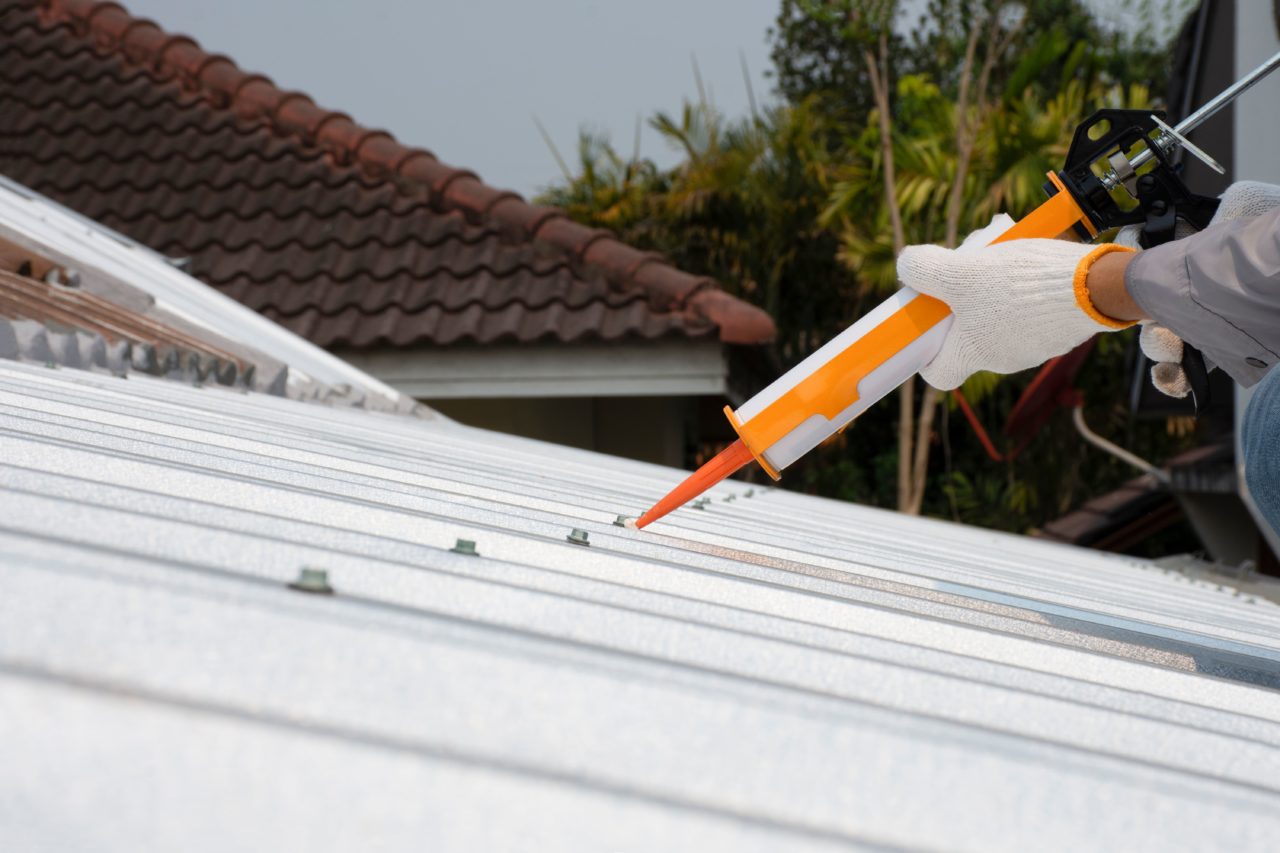Sealant is a vital component of the structure of a metal roof. While you might not be visible or able to see the sealant, it is required to form a waterproof bond to avoid moisture seeping through any gaps in your roofing and causing damage to your home.
A sealant is instrumental for forming waterproof bonds or creating a seal between different materials, if you prefer. Not only this, but different sealants have different properties and are suitable for various applications, from sealing metal roofs to HVAC systems, floors and windows, and more. So you must choose the correct metal roofing sealant to prove the protection you need.
This post goes into more detail on the types of metal roof sealant, when to use it and gun caulk vs take caulk, and when you should use a different application.
Gun Caulk Sealant
Gun caulk sealant comes in a tube that can be placed in a caulking unit for metal roof application. Gun caulk is typically made from the following materials;
- Silicone
- Butyl
- Urethane
- Tri-polymer
Gun caulking sealant can be curable or non-curable, with curable sealant hardening over time and non- curable adhesive remaining flexible for a period.
When To Use Gun Caulk Sealant
In the content of affixing metal roofing, there are some instances when you should use gun caulk sealant, including;
- At the top of the pipe boot, including the pipe band. This is to stop it from sagging.
- In between panel seams
- where metal is overlapped – sidewalls, metal flashing, ridge caps, headwalls, and trims.
- Anywhere a metal-to-metal connection isn’t fastened off
- To avoid anti-siphoning by the eave. This happens when water runs down the roof and gets between the seams.
As well as this, there are some circumstances when gun caulk shouldn’t be used, which are;
- On top of fasteners
- In gaps or voids in the roof system
- In specific spots in the roofing system where the metal can be used
- In a place where the sealant is exposed, causing it to fail, e.g., in direct sunlight.
Tape Sealant
Tape sealant is essentially what it sounds like. A length of sealant that resembles tape. Tape sealants are usually made from butyl. Butyl tape is a synthetic rubber composed of the copolymer of isobutylene with isoprene. It is double-sized and comes in many different sizes and thicknesses.
Tape sealant is used because it is ideal for bonding all types of metal together and is a sealing material that doesn’t bleed, harden or stain.
When To Use Tape Sealant
When subjected to compression, butyl tape elicits the formation of a seal.
In the case of a Z-closure, for instance, there is the base metal, then the butyl tape, and finally another piece of metal. After all three layers have been brought together, the materials are compacted by being fastened off at intervals of four inches in the center. The last part of every four inches is crucial because putting a fastener through butyl tape compresses out two inches on each side.
You should use tape sealant in the following situations;
- The metal is fastened off or will be screwed down on metal-to-metal applications.
- If you have an offset cleat (bottom)
- Under a pipe boot
- With a z-closure (bottom)
Again, as with caulk sealant, there are times when the use of tape sealant isn’t recommended;
- On the sides of z closures
- In between panel seams as the tape is too thick and won’t allow a mechanically seamed profile to be double locked.
- If you’re not fastening or screwing anything down
- Where you don’t have a compression to create a seal for the tape.
Using Sealant Correctly
There are many different ways you can use sealant. However, you should avoid some significant issues when using a sealant for your metal roof. If you can see the sealant when looking at the roof, or there are big globs of sealant, it hasn’t been applied correctly. Sealant isn’t the first thing that protects the house from water. The metal is. So if you can see the sealant, the roof isn’t the first thing to come into contact with the water, reducing its efficiency.
Always follow manufacturer guidelines when applying the sealant to ensure you are using it correctly and it is suitable for your needs. These guidelines will be displayed on the packaging, and you can refer back to the manufacturer if required.
You should also ensure that your sealant of choice is explicitly designed for sealing metal roofing. Regardless of the brand or style of sealant, you should be confident it is intended for this use to avoid damage to your roof and home’s structure being compromised.
Conclusion
As mentioned, there are many considerations when looking at the use of gun caulk vs tape caulk to seal metal roofing. There are particular circumstances where either one or the other should be used, and following clear guidelines and manufacturers’ instructions can help you to ensure you are providing your metal roof with the proper seal.

